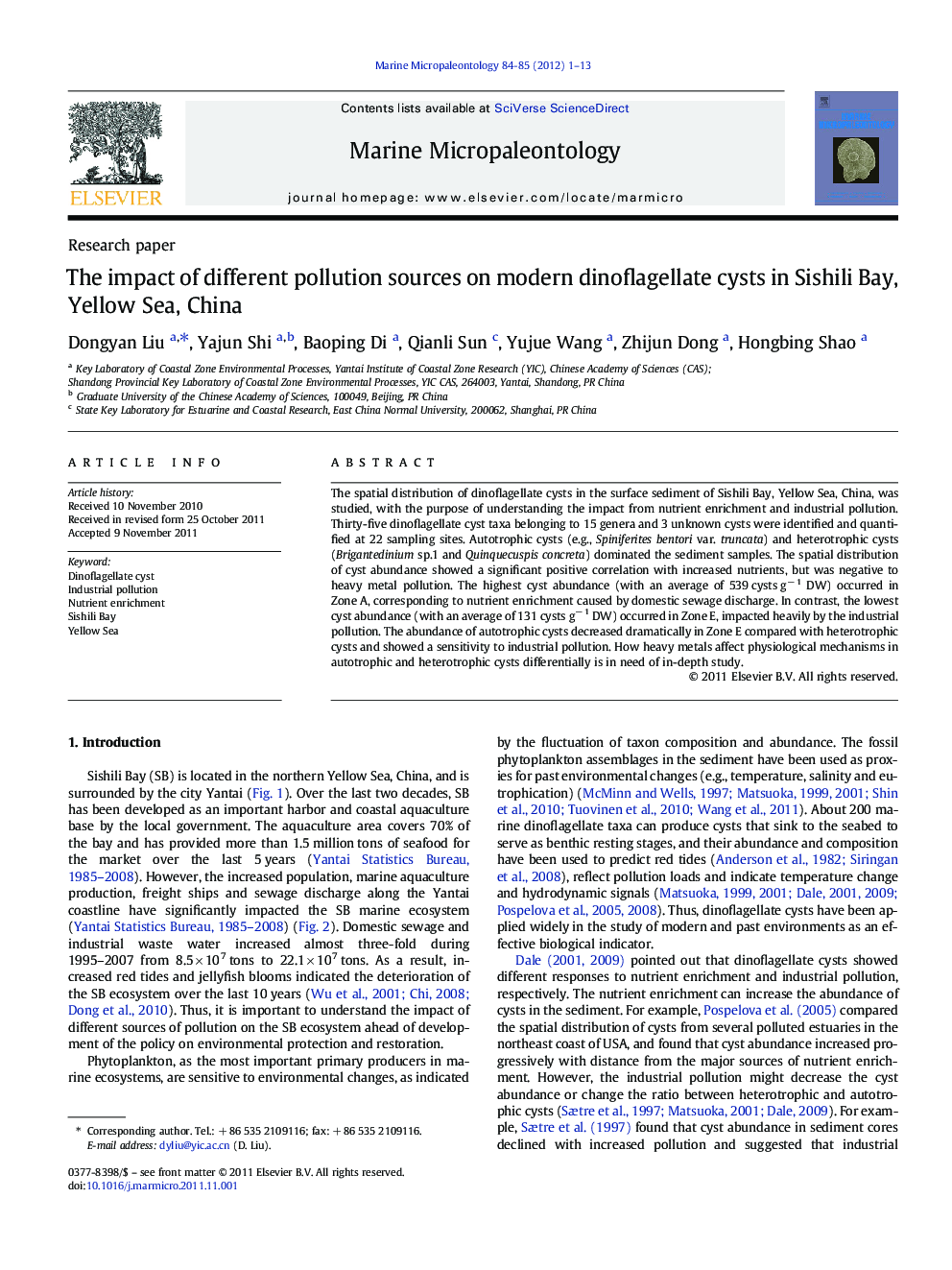| Article ID | Journal | Published Year | Pages | File Type |
|---|---|---|---|---|
| 4749024 | Marine Micropaleontology | 2012 | 13 Pages |
The spatial distribution of dinoflagellate cysts in the surface sediment of Sishili Bay, Yellow Sea, China, was studied, with the purpose of understanding the impact from nutrient enrichment and industrial pollution. Thirty-five dinoflagellate cyst taxa belonging to 15 genera and 3 unknown cysts were identified and quantified at 22 sampling sites. Autotrophic cysts (e.g., Spiniferites bentori var. truncata) and heterotrophic cysts (Brigantedinium sp.1 and Quinquecuspis concreta) dominated the sediment samples. The spatial distribution of cyst abundance showed a significant positive correlation with increased nutrients, but was negative to heavy metal pollution. The highest cyst abundance (with an average of 539 cysts g− 1 DW) occurred in Zone A, corresponding to nutrient enrichment caused by domestic sewage discharge. In contrast, the lowest cyst abundance (with an average of 131 cysts g− 1 DW) occurred in Zone E, impacted heavily by the industrial pollution. The abundance of autotrophic cysts decreased dramatically in Zone E compared with heterotrophic cysts and showed a sensitivity to industrial pollution. How heavy metals affect physiological mechanisms in autotrophic and heterotrophic cysts differentially is in need of in-depth study.
Research Highlights► The spatial distribution of dinoflagellate cysts in Sishili Bay, Yellow Sea, China was studied. ► Dinoflagellate cysts showed different response to nutrient enrichment and industrial pollution. ► Autotrophic and heterotrophic cysts could display different mechanism on heavy metal pollution.
